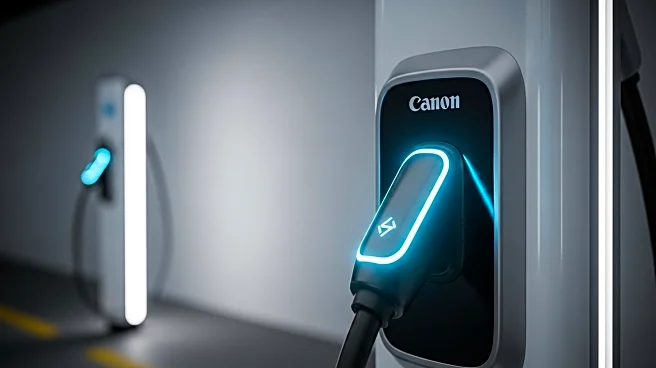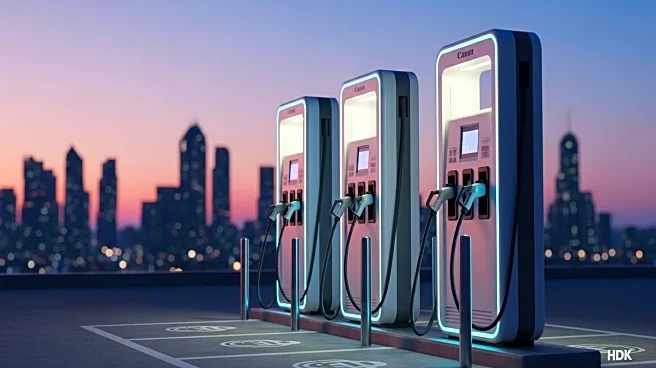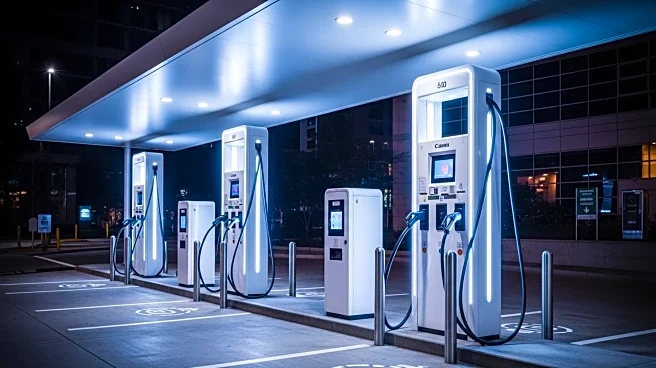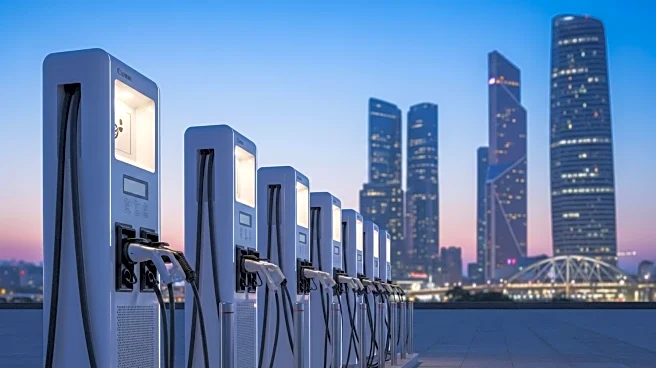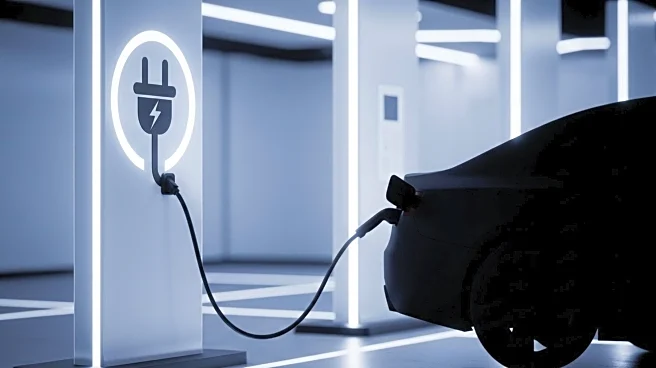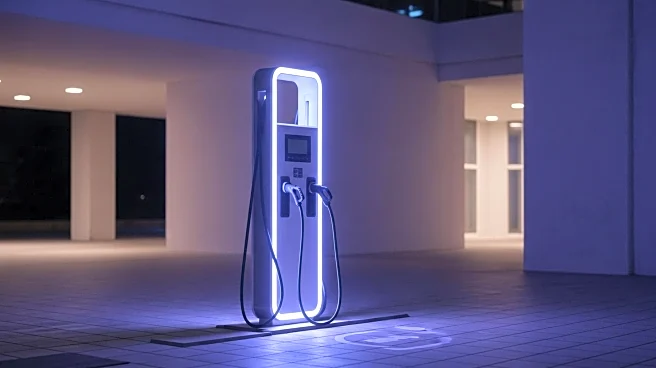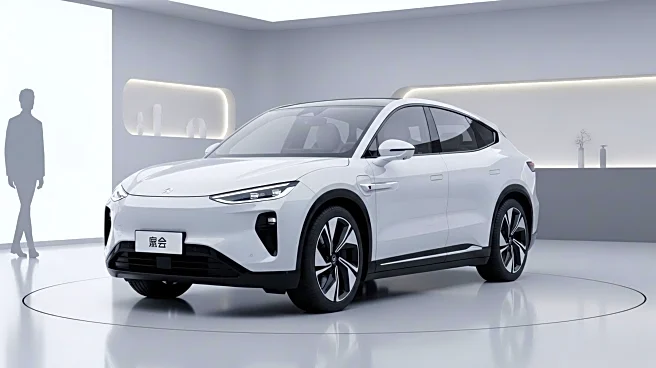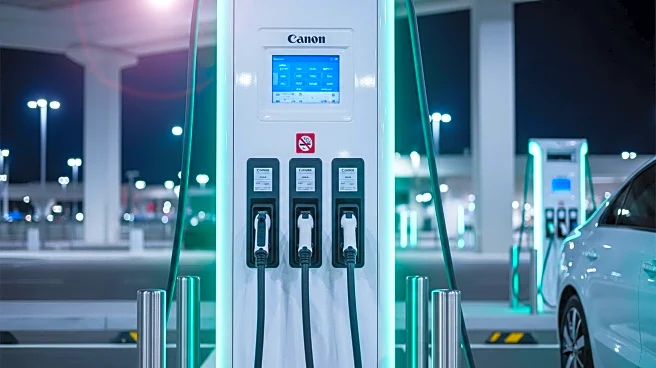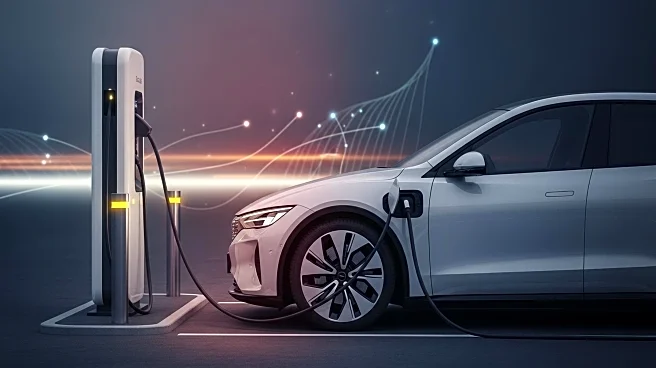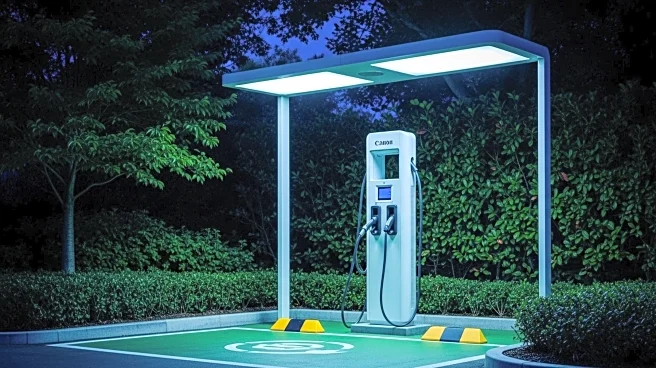What's Happening?
Hyundai Motor America has announced significant price reductions for its 2026 IONIQ 5 electric vehicle lineup, with cuts ranging from $7,600 to $9,800. This move is part of Hyundai's strategy to make electric vehicles (EVs) more accessible and competitive in the U.S. market. The price adjustment aims to align with current market dynamics and support increased production volumes in the U.S. Hyundai's decision comes as the federal EV tax credit has expired, prompting automakers to find new ways to attract consumers. The IONIQ 5, known for its innovative technology and design, has been a popular choice among EV buyers since its introduction.
Why It's Important?
The price reduction of the IONIQ 5 is significant as it addresses one of the main barriers to EV adoption: cost. By lowering prices, Hyundai is making EVs more affordable, potentially increasing their market share in the U.S. This move could influence other automakers to follow suit, leading to a more competitive EV market. The reduction in price may also help offset the impact of the expired federal tax credit, which previously incentivized EV purchases. As the EV market evolves, such pricing strategies could play a crucial role in accelerating the transition from internal combustion engines to electric vehicles, impacting the automotive industry and environmental policies.
What's Next?
Hyundai's price cuts are expected to maintain the IONIQ 5's appeal among consumers, even without the federal tax credit. The company is positioning itself for long-term success in the EV market by making its vehicles more financially accessible. Other automakers may respond with similar pricing strategies or incentives to remain competitive. The broader impact on EV sales will depend on consumer response to these price adjustments and the overall market dynamics. Analysts predict a potential decline in EV sales in the short term, but Hyundai's approach could mitigate this trend and sustain interest in electric vehicles.
Beyond the Headlines
Hyundai's decision to reduce prices highlights the potential for market-driven solutions to promote EV adoption. By adjusting prices, automakers can influence consumer behavior and drive the transition to cleaner transportation options. This development also raises questions about the role of government incentives in shaping market dynamics and whether similar strategies could be applied to other sectors. The long-term success of such initiatives will depend on continued innovation and the ability of automakers to deliver affordable, high-quality EVs that meet consumer needs.

